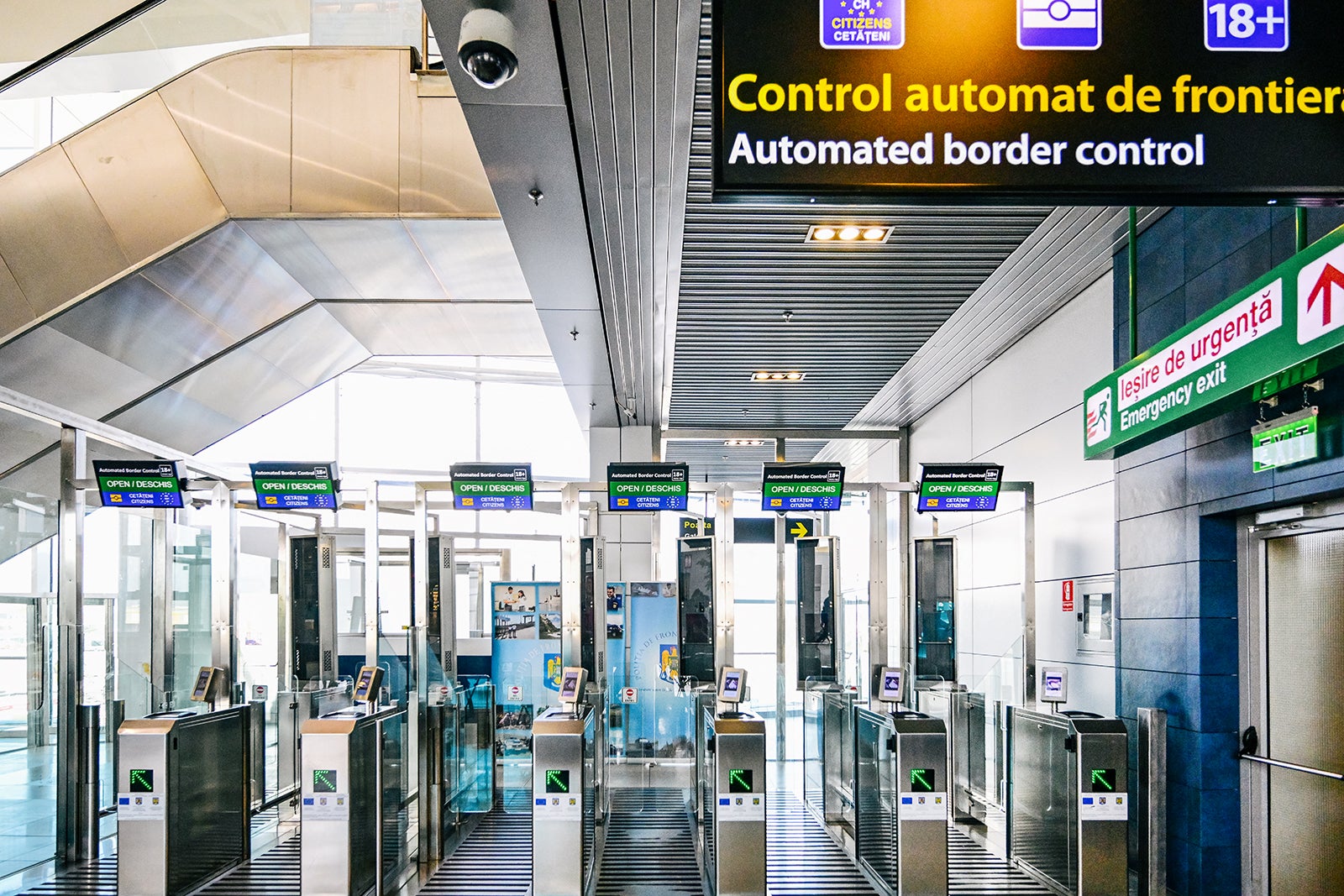New European Entry/Exit System to launch in October

Vacationers to sure European international locations will quickly expertise a brand new border management course of as Europe’s long-awaited new Entry/Exit System, or EES, will start its rollout this fall. The launch of the system, which is able to use biometric knowledge to register the visits of non-European Union vacationers, has been delayed a number of occasions because it was initially anticipated to start in 2021.
The EES is necessary for all non-EU nationals, and you can not choose out of getting your biometric knowledge captured. In case you refuse, you may be denied entry.
What’s the EES?
The EES is an automatic data expertise system designed to register non-EU nationals touring for a brief keep to any of the 29 international locations utilizing the system. A “brief keep” is outlined as as much as 90 days inside any 180-day interval for all of the European international locations utilizing the EES. One of many system’s predominant capabilities is to establish those that overstay the allotted time.
“The EES modernises border administration by growing effectivity and high quality of processes on the border. It additionally simplifies journey and makes it safer,” in response to the official web site of the European Union.
The international locations utilizing the system are Austria, Belgium, Bulgaria, Croatia, Czech Republic, Denmark, Estonia, Finland, France, Germany, Greece, Hungary, Iceland, Italy, Latvia, Liechtenstein, Lithuania, Luxembourg, Malta, Netherlands, Norway, Poland, Portugal, Romania, Slovakia, Slovenia, Spain, Sweden and Switzerland.
EES international locations embrace 25 of the 27 EU member states, with solely Cyprus and Eire not collaborating. These international locations will proceed to carry out handbook border passport checks. Iceland, Liechtenstein, Norway and Switzerland are non-EU international locations, however they’re members of the Schengen Space and observe the short-stay guidelines.
Day by day E-newsletter
Reward your inbox with the TPG Day by day publication
Be part of over 700,000 readers for breaking information, in-depth guides and unique offers from TPG’s consultants
When will it launch?
The system will launch in phases over a six-month interval. Starting Oct. 12, 2025, knowledge assortment will regularly be launched at border crossing factors. It’s anticipated to be totally applied by April 10, 2026.
Through the rollout interval, vacationers might not have their biometric knowledge collected at each border crossing or their private data registered within the system, and passports will proceed to be stamped as traditional.
How US vacationers will likely be affected
Whenever you arrive at a border crossing level for the primary time after the EES begins, you’ll have to present your private knowledge out of your passport, together with your full identify and date of delivery. Passport management officers will scan 4 of your fingerprints and/or take a photograph of your face to be saved in a digital file referred to as the Biometric Matching Service. The fingerprints of kids beneath age 12 won’t be scanned.
It’s unknown whether or not the rollout will trigger longer wait occasions at borders whereas vacationers navigate the brand new system. It might be attainable to register a few of your knowledge upfront utilizing a self-service system if it is accessible at your border crossing level or a cellular app if the nation you are touring to has one. You’ll nonetheless have to see a passport management officer.
The EES will monitor the date and site of every entry and exit, together with whether or not you had been refused entry. Information of entries, exits and refusals will likely be saved for 3 years after which routinely erased. Vacationers can request entry to their knowledge, request corrections and request that their knowledge be deleted.
Backside line
The EES is just not the one change coming to European journey. The European Journey Data and Authorisation System remains to be anticipated to be applied for visa-free vacationers within the final quarter of 2026. Nonetheless, it has simply been introduced that the applying payment will now be 20 euros (about $23), a rise from the initially introduced payment of seven euros (about $8).
Associated studying:
Supply hyperlink




